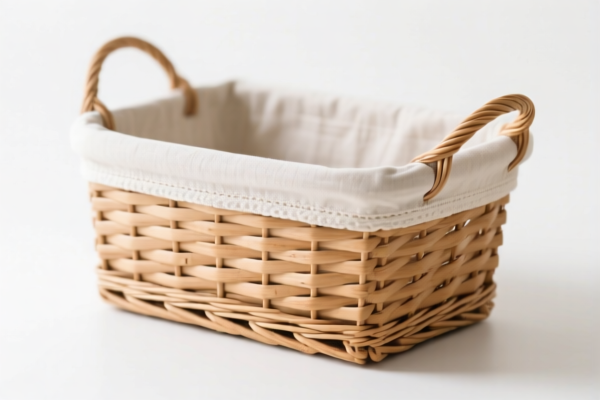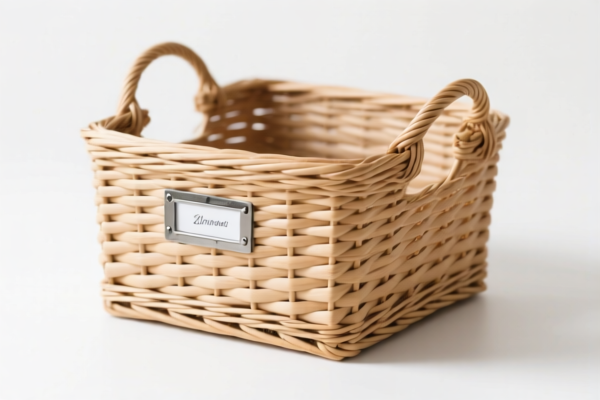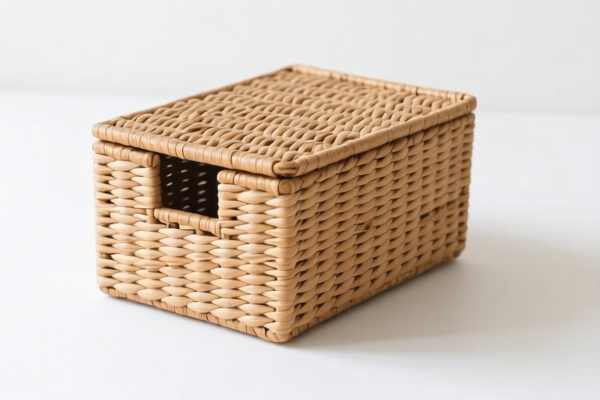| HS Code | Official Doc | Tariff Rate | Origin | Destination | Effective Date |
|---|---|---|---|---|---|
| 4602190500 | Doc | 60.0% | CN | US | 2025-05-12 |
| 4602191200 | Doc | 60.8% | CN | US | 2025-05-12 |
| 4601990500 | Doc | 57.7% | CN | US | 2025-05-12 |
| 4601999000 | Doc | 58.3% | CN | US | 2025-05-12 |
| 3923900080 | Doc | 58.0% | CN | US | 2025-05-12 |
| 3926909910 | Doc | 42.8% | CN | US | 2025-05-12 |
| 3926909925 | Doc | 42.8% | CN | US | 2025-05-12 |




Organizer Basket
An organizer basket is a container designed for the storage and arrangement of various items. They are commonly used to declutter spaces, provide easy access to frequently used objects, and enhance the aesthetic appeal of a room.
Material
Organizer baskets are constructed from a wide array of materials, each offering distinct characteristics:
- Plastic: Lightweight, durable, and easy to clean, plastic baskets are a cost-effective option suitable for diverse environments. Variations include polypropylene, polyethylene, and acrylic.
- Metal: Often steel or iron, metal baskets provide robust support and a modern aesthetic. They may feature powder-coated finishes for rust resistance.
- Woven Materials: Including natural fibers like willow, rattan, seagrass, and hyacinth, woven baskets offer a rustic or bohemian style. Synthetic alternatives like paper rope or fabric are also common.
- Fabric: Typically cotton, linen, or polyester, fabric baskets are soft-sided and collapsible, ideal for lightweight items and portability.
- Wood: Provides a classic and warm aesthetic. Commonly used woods include pine, oak, and bamboo.
Purpose
The primary purpose of an organizer basket is to contain and organize items. Specific uses include:
- Storage: Holding toys, books, clothing, toiletries, office supplies, and kitchen items.
- Transportation: Carrying items from one location to another.
- Display: Showcasing decorative objects or produce.
- Laundry: Collecting and transporting dirty or clean laundry.
Function
Organizer baskets function by providing a defined space for items, preventing clutter and facilitating easy access. Key functional features include:
- Handles: Facilitate easy carrying and maneuverability.
- Lids: Protect contents from dust and maintain privacy.
- Stackable Design: Maximizes vertical space and optimizes storage efficiency.
- Dividers: Separate items within the basket for enhanced organization.
- Wheels: Enable easy movement, particularly for heavier items.
Usage Scenarios
Organizer baskets are versatile and applicable in numerous settings:
- Home: Bedrooms, bathrooms, kitchens, living rooms, nurseries, and closets.
- Office: Desks, shelves, and storage rooms.
- Retail: Displaying merchandise and providing shopping convenience.
- Gardening: Collecting produce and transporting gardening tools.
- Laundry Rooms: Sorting and carrying laundry.
Common Types
- Woven Baskets: Natural or synthetic fibers, often with handles. Suitable for decorative storage and lightweight items.
- Plastic Baskets: Durable and easy to clean, ideal for diverse storage needs.
- Wire Baskets: Metal construction, providing robust support and a modern aesthetic.
- Fabric Baskets: Soft-sided and collapsible, suitable for lightweight items and portability.
- Under-Bed Storage Baskets: Designed to fit under beds, maximizing storage space.
- Hanging Baskets: Suspended from ceilings or walls, providing decorative storage.
- Corner Baskets: Shaped to fit into corners, optimizing space utilization.
- Tiered Baskets: Multi-level design, providing organized storage for various items.
Organizer baskets fall under several potential classifications based on their material and specific characteristics. Here's a breakdown of relevant HS codes based on the provided information:
-
4602190500: This code covers basketwork, wickerwork, and similar articles made directly from plaiting materials or assembled from articles of heading 4601, specifically those of vegetable materials and categorized as fishing baskets or creels. If the organizer basket is constructed from vegetable fibers and designed for fishing purposes, this code applies. The total tax rate is 60.0%, comprising a 5.0% base tariff and a 25.0% additional tariff, increasing to 30% after April 2, 2025.
-
4602191200: This HS code is for basketwork, wickerwork, and similar articles of vegetable materials, specifically other baskets and bags (whether or not lined) made of willow. If the organizer basket is constructed from willow, this code is applicable. The total tax rate is 60.8%, consisting of a 5.8% base tariff and a 25.0% additional tariff, rising to 30% after April 2, 2025.
-
4601990500: This code applies to plaits and similar products of plaiting materials, whether assembled into strips or not, and includes plaiting materials bound together or woven into sheets, even if finished as articles like mats. If the organizer basket is made from plaiting materials and is not a fully assembled basket but rather a component or semi-finished product, this code may be relevant. The total tax rate is 57.7%, with a 2.7% base tariff and a 25.0% additional tariff, increasing to 30% after April 2, 2025.
-
4601999000: This code covers other plaits and similar products of plaiting materials, whether assembled into strips or not. If the organizer basket is made from plaiting materials and doesn't fall into more specific categories within heading 4601, this code may apply. The total tax rate is 58.3%, comprising a 3.3% base tariff and a 25.0% additional tariff, increasing to 30% after April 2, 2025.
It is important to determine the precise material composition of the organizer basket (e.g., vegetable fibers, willow, other materials) to select the most accurate HS code.
Customer Reviews
No reviews yet.